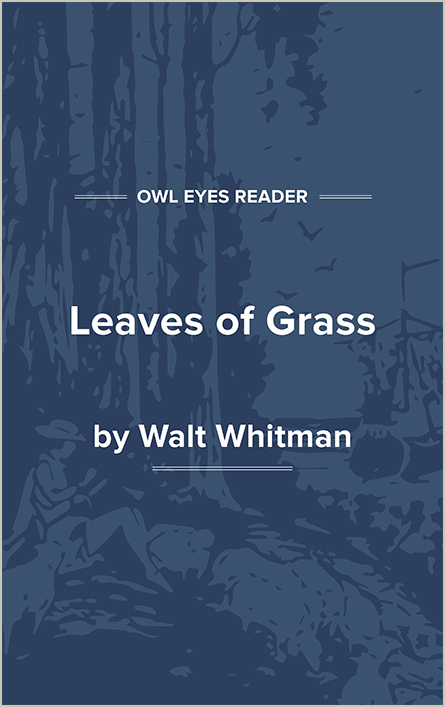Study Guide
Summary
“America” is the first word of Walt Whitman’s 1855 preface to Leaves of Grass, but this most American of poetic achievements is also the most universal. “The United States themselves are essentially the greatest poem,” Whitman says, a belief that informs Leaves of Grass and led Whitman to redefine “poem” in such a way as to change forever the face of poetry.
Whitman paid for the publication of the first version of Leaves of Grass and even set some of the type himself. It is a slim volume, containing a preface and twelve poems, each several pages in length, sprawling across the pages, and looking quite unlike the neatly rhymed and metered poems then popular with readers. Whitman revised and expanded the book six times and reprinted it twice more. The final and most complete version of Leaves of Grass, published while Whitman was near death (1891-1892), includes hundreds of pages and dozens of poems. Through its various versions, Leaves of Grass always remained a unified whole, and several themes and stylistic innovations remain constant.
Whitman believed that his lyrical epic poem about a new land required a new voice. Leaves of Grass represents a major innovation in poetic form. It is the first great nineteenth century work in English in what has come to be called free verse, poetry without obvious rhyme or meter. Whitman draws on other poets’ experiments with unrhymed, nonmetrical poetry and on the sonorous rhythms of the King James version of the Bible, but he develops the form in volume and expressive power. Free verse—long lines and loose rhythmic structure—became the perfect vehicle for poems with themes of identity, nationality, and transcendence.
At best, the poems of Leaves of Grass are brilliantly rhythmic, with an eloquent use of the American language to describe ordinary experience. In “The blab of the pave, tires of carts, sluff of boot-soles,” for example, colloquial diction and onomatopoeia re-create the sights and sounds of the streets. Whitman takes risks by presenting himself as a typical American working man, “one of the roughs” and a democratic Everyman, but also as a poet of frank sexuality. This image of the poet as sensuous Everyman represents the masterly centerpiece of all the versions of Leaves of Grass, that long poem that Whitman did not title in 1855 but that he eventually called “Song of Myself.” In the 1855 edition, Whitman’s name does not appear on the title page but it appears in the poem: “Walt Whitman, an American, one of the roughs, a kosmos,/ Disorderly fleshy and sensual . . . eating drinking and breeding.”
“Myself” in the poem is and is not Whitman, for the poem is at once personal and an elevation of the individual to the mythic. A central idea of “Song of Myself” is that the cycle of life constantly renews itself and so triumphs over death: “The smallest sprout shows there really is no death.”
Whitman is preeminently a poet of joy and of the intersection of body and soul: “I and this mystery here we stand.” Individual identity therefore becomes at once fragile and transcendent. The individual dies and “life” goes on. By recognizing and absorbing this knowledge, Whitman says, all may feel unity with life and so triumph over death.
Early in “Song of Myself,” Whitman introduces leaves as a metaphor, likening the grass to a flag, handkerchief, child, and hieroglyphic, “the beautiful uncut hair of graves” and “so many uttering tongues.” By using metaphor, Whitman helps the reader see grass differently. Like the speaker, who is an ordinary man, grass represents an ordinary creation so plentiful it is likely to go unnoticed. However, just as in a democracy every voice is important, in Leaves of Grass every leaf is a reminder of the beauty and transcendence of life.
Like Leaves of Grass as a whole, “Song of Myself” progresses toward its climax by dilating and contracting on a number of themes and images. Section by section,...
(The entire page is 1,861 words.)
Owl Eyes subscribers get unlimited access to our expert annotations, analyses, and study guides on your favorite texts. Master the classics for less than $5/month!

